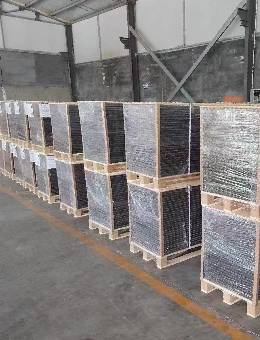Exploring the Versatility of Slatted Wall Panels
Slatted wall panels have emerged as a popular design element in contemporary architecture and interior design, combining aesthetics with functionality. These panels are characterized by their horizontal or vertical slats, which can be made from various materials, including wood, metal, or composite materials. The beauty of slatted wall panels lies in their versatility, allowing them to enhance a wide range of spaces, from residential to commercial environments.
One of the primary benefits of slatted wall panels is their ability to create dynamic visual interest. The play between light and shadow on the slats can add depth and dimension to a room, making walls more than just a flat backdrop. Designers often use slatted panels to create feature walls, which can serve as a focal point in a space. By varying the size, spacing, and orientation of the slats, designers can craft unique textures and patterns that reflect the character and mood of the environment.
In addition to their aesthetic appeal, slatted wall panels offer practical advantages. One of the most significant benefits is their ability to improve acoustics in a room. The design of the slats can help absorb sound, reducing echo and enhancing the overall auditory experience. This makes slatted panels an excellent choice for spaces such as offices, recording studios, and restaurants, where sound control is essential.
Slatted wall panels also serve as an effective means of partitioning spaces without the need for solid walls. They can be used to create subtle divisions between areas while maintaining an airy, open feel. This is particularly beneficial in open-plan layouts, where the need for separation often arises but must be balanced with a sense of continuity. For instance, slatted panels can easily delineate a lounge area from a workspace without completely closing off the two environments, fostering interaction while providing some privacy.
slatted wall panels

From a practical standpoint, slatted wall panels are also relatively easy to install and maintain. Many systems are designed for quick installation, allowing for flexible design modifications as needed. Maintenance is straightforward as well; depending on the material used, a simple cleaning routine is often sufficient to keep the panels looking fresh. This durability makes slatted panels a long-term investment in any design scheme.
Furthermore, sustainability is becoming a more significant concern in design and architecture. Many manufacturers offer eco-friendly slatted wall panels made from responsibly sourced materials or recycled products. This not only reduces the environmental impact but also enhances the appeal of a project to environmentally-conscious consumers and clients.
The versatility of slatted wall panels extends to their application in outdoor spaces. Exterior slatted panels can be used to enhance the façade of buildings, creating striking visual identities. They can also provide shade and privacy on patios and balconies, allowing homeowners to enjoy their outdoor spaces comfortably. This adaptability adds to their popularity among architects and designers looking to blur the lines between indoor and outdoor living.
In conclusion, slatted wall panels represent a fusion of beauty and practicality, offering endless possibilities for enhancing modern spaces. Their ability to improve acoustics, create visual interest, and provide flexible space division makes them an invaluable tool in any designer's arsenal. As trends continue to evolve, slatted wall panels are set to remain a staple in contemporary design, appealing to both aesthetic sensibilities and functional requirements. Whether in homes, offices, or outdoor settings, these panels breathe life into spaces, transforming them into dynamic, engaging environments.
